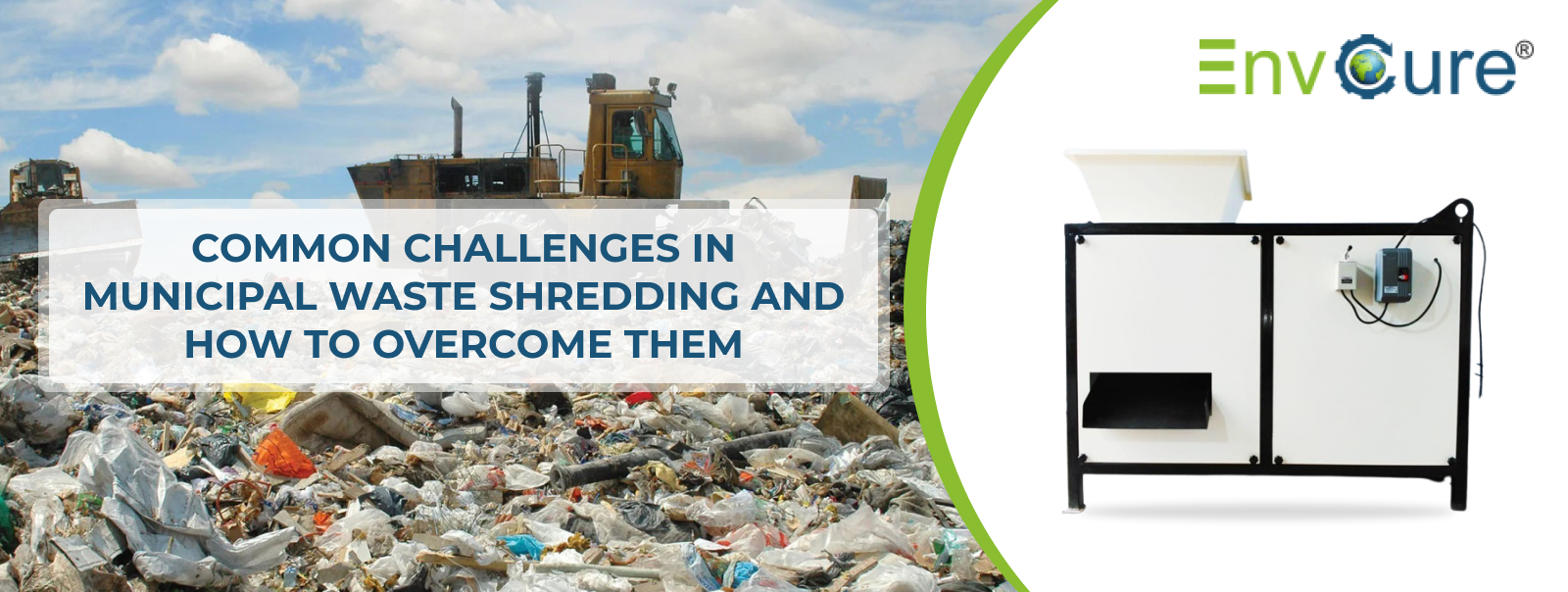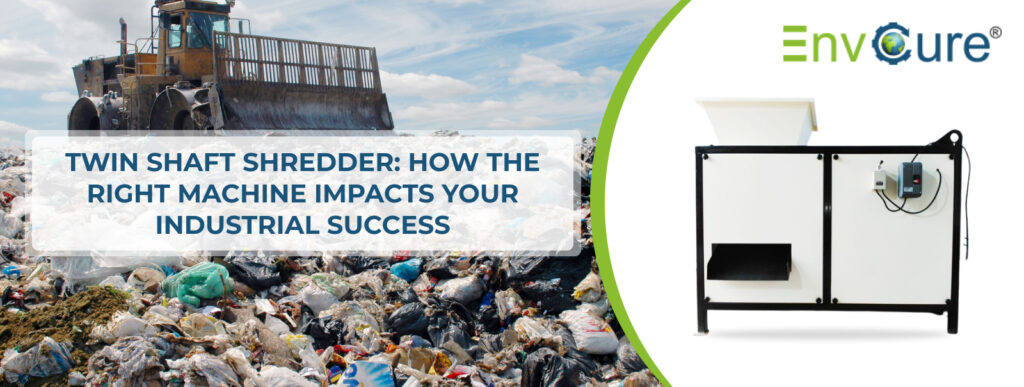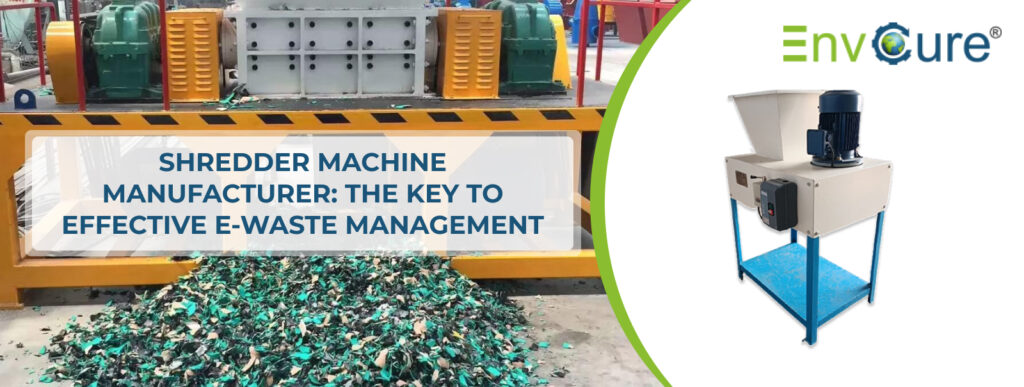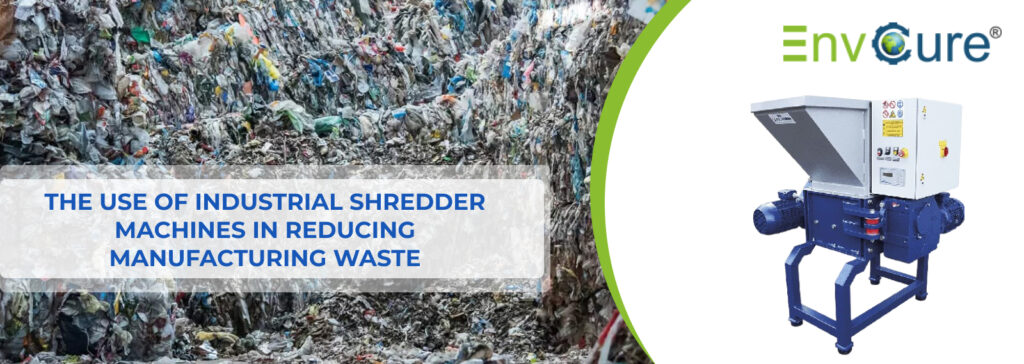Municipal waste shredder is an essential, yet often overlooked, aspect of waste management. It is a complex process that involves a range of challenges.
These challenges can hinder the efficiency of waste management systems and impact the environment if not addressed effectively. In this article, we will explore some of the most common challenges faced in municipal waste shredder and provide insights into how to overcome them.
Importance of Municipal Waste Management Through Effective Shredding
The efficient management of municipal solid waste is a critical global issue. With urban populations continuing to grow, the amount of waste generated is also increasing.
Effective waste shredding is a key component of successful waste management, as it facilitates the reduction, recycling, and disposal of waste materials.
However, municipal waste shredder machines and systems often encounter challenges that impact their performance and longevity.
Understanding these challenges and implementing effective solutions are crucial for maintaining efficient waste management operations and protecting the environment.
Common Challenges in Municipal Waste Shredder
1. Diversity of Waste Streams
One of the primary challenges in municipal waste shredder is the diverse nature of waste streams. Municipal solid waste can include a wide range of materials, such as plastics, metals, textiles, organic matter, and legacy waste. Each of these materials has unique characteristics and requires specific handling and processing methods.
To handle this challenge effectively, it is recommended to:
- Utilize a combination of shredding technologies, such as single-shaft, two-shaft, or four-shaft shredders, each tailored to specific materials.
- Implement flexible and adaptable systems that can process a diverse range of waste streams efficiently.
- Develop processes to separate and sort waste to optimize the shredding process.
Explore the advancements in municipal waste shredders and their significant impact on waste reduction. Read this insightful post to know more.
2. Presence of Contaminants
Another significant challenge is the presence of contaminants in the waste stream. Municipal solid waste can often contain hazardous materials, such as batteries, chemicals, medical waste, and electronic waste. These contaminants can pose risks to both human health and the environment if not properly identified and separated.
Here are some key tips to address this issue:
- Employ robust waste sorting and separation processes, including manual sorting and advanced technology separators (magnetic, eddy current, sensor-based).
- Implement strict protocols for identifying and handling hazardous waste to minimize risks and ensure the safety of personnel and equipment.
- Train personnel to recognize and respond to unexpected hazardous materials appropriately.
3. Wear and Tear on Shredder Machines
Shredder machines are subjected to significant wear and tear due to the nature of the materials they process. The constant impact and abrasion from shredding hard and abrasive materials can lead to rapid deterioration of the shredder components, resulting in decreased performance and increased downtime for maintenance and repairs.
To mitigate these challenges:
- Select high-quality, durable shredder machines designed for the specific waste types being processed.
- Incorporate wear-resistant materials, such as hardened steel or carbide inserts, to extend the lifespan of critical components.
- Implement a comprehensive maintenance program, including regular inspections, lubrication, and wear part replacement, to optimize performance and minimize unexpected downtime.
Discover how Double Shaft Shredders are important in handling and reducing industrial waste. Learn more about their design and environmental benefits in this detailed article.
4. Managing Legacy Waste
Legacy waste refers to waste that has been accumulated and stored over extended periods, often in landfills or waste repositories. Managing legacy waste can be challenging due to the unknown nature of the materials involved and the potential for hazardous or unpredictable substances.
To tackle legacy waste effectively:
- Develop a comprehensive legacy waste management plan that includes waste characterization, assessment, and risk evaluation through sampling, analysis, and identification of potential hazards.
- Implement pre-treatment steps, such as sorting, size reduction, and separation, to facilitate safe and efficient processing.
- Collaborate with experts in legacy waste management to ensure the development of appropriate disposal or recycling methods.
Twin Shaft Shredders effortlessly manage RDF and legacy waste, combining efficiency with robustness. Explore how this machine transforms waste management practices in this detailed article.
5. Optimizing Energy Efficiency
Waste shredding can be an energy-intensive process, particularly when dealing with large volumes of waste or challenging materials. Optimizing the energy efficiency of shredder machines and systems is crucial for reducing operational costs and minimizing the environmental impact of waste management operations.
To enhance energy efficiency:
- Utilize energy-efficient drive systems, such as variable frequency drives, to match energy consumption with load requirements.
- Implement intelligent control systems that optimize feed rates and cutter speeds based on waste material characteristics.
- Regularly maintain equipment to ensure optimal performance and minimize energy wastage.
Conclusion: EnvCure – Your Partner in Waste Shredding
At EnvCure Technocrat LLP, we understand the challenges faced in municipal waste shredder and are dedicated to providing innovative and sustainable solutions.
With over six years of experience and a team of 20+ experts, we have installed more than 1500 machines across five countries, serving a diverse range of industries, including hospitals, universities, canteens, temples, and market yards.
With our expertise and range of high-quality, durable shredder machines, we are well-equipped to help you overcome the challenges of municipal waste shredder. Get in touch with us to learn more about how we can assist in optimizing your waste management operations and contributing to a greener future.
Frequently Asked Questions:
Q.1. What are the most common challenges faced in municipal waste shredding?
Ans. Common challenges include equipment wear and tear, clogging, inconsistent material sizes, high maintenance costs, and environmental concerns.
Q.2. How can equipment wear and tear be managed effectively?
Ans. Regular maintenance schedules, proper training for operators, and using high-quality, durable shredding components can help manage equipment wear and tear.
Q.3. What are some effective ways to enhance efficiency in municipal waste shredding?
Ans. Upgrading to more efficient shredding technologies, optimizing workflows, and integrating automation can enhance overall efficiency.








